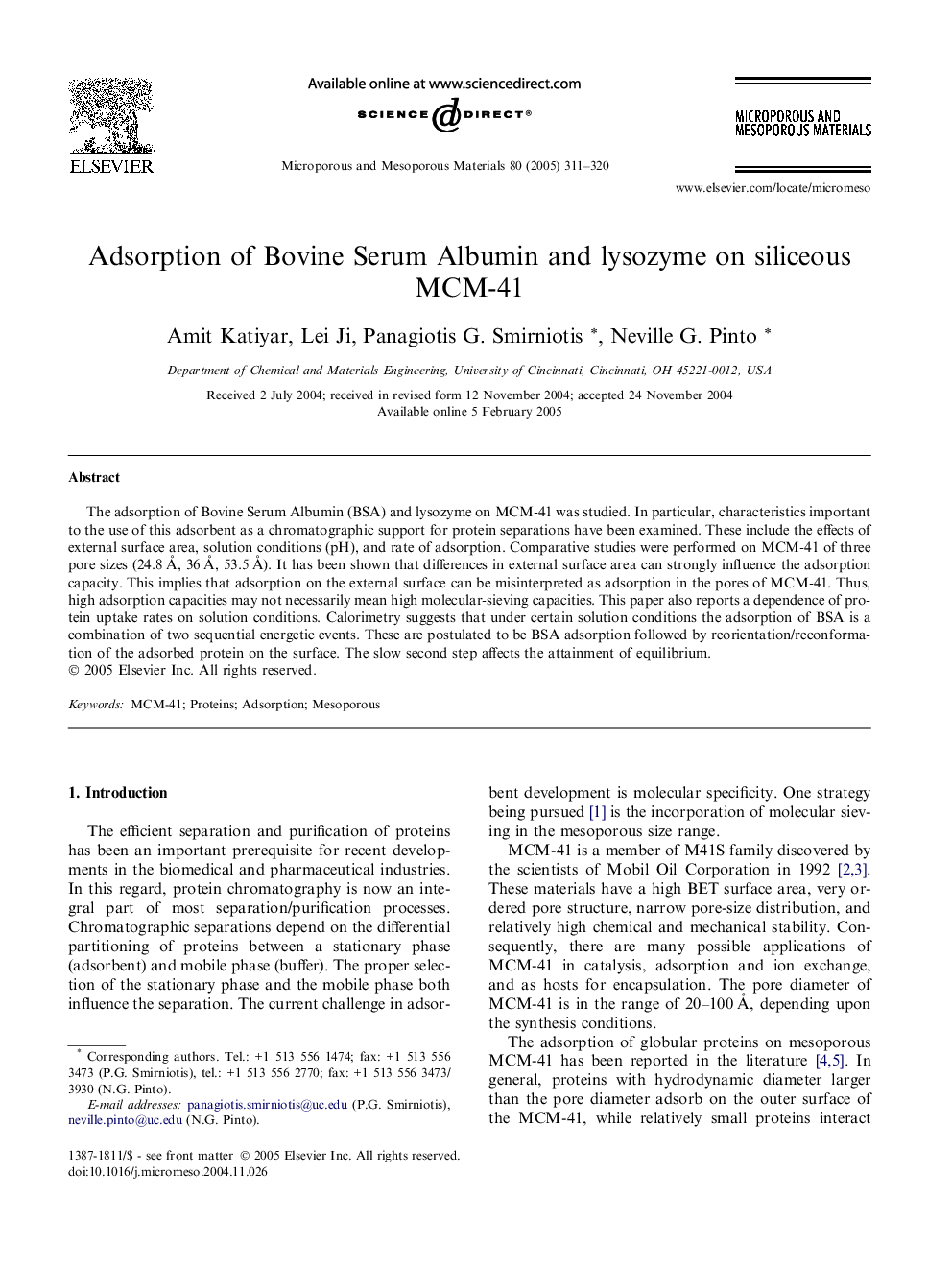| Article ID | Journal | Published Year | Pages | File Type |
|---|---|---|---|---|
| 9617770 | Microporous and Mesoporous Materials | 2005 | 10 Pages |
Abstract
The adsorption of Bovine Serum Albumin (BSA) and lysozyme on MCM-41 was studied. In particular, characteristics important to the use of this adsorbent as a chromatographic support for protein separations have been examined. These include the effects of external surface area, solution conditions (pH), and rate of adsorption. Comparative studies were performed on MCM-41 of three pore sizes (24.8Â Ã
, 36Â Ã
, 53.5Â Ã
). It has been shown that differences in external surface area can strongly influence the adsorption capacity. This implies that adsorption on the external surface can be misinterpreted as adsorption in the pores of MCM-41. Thus, high adsorption capacities may not necessarily mean high molecular-sieving capacities. This paper also reports a dependence of protein uptake rates on solution conditions. Calorimetry suggests that under certain solution conditions the adsorption of BSA is a combination of two sequential energetic events. These are postulated to be BSA adsorption followed by reorientation/reconformation of the adsorbed protein on the surface. The slow second step affects the attainment of equilibrium.
Keywords
Related Topics
Physical Sciences and Engineering
Chemical Engineering
Catalysis
Authors
Amit Katiyar, Lei Ji, Panagiotis G. Smirniotis, Neville G. Pinto,
